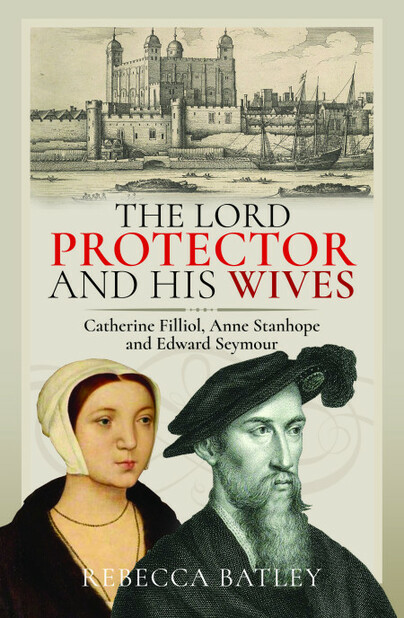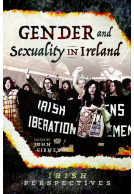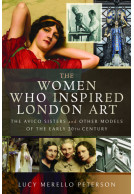The Lord Protector and His Wives (Hardback)
Catherine Filliol, Anne Stanhope and Edward Seymour
Imprint: Pen & Sword History
Pages: 240
Illustrations: 30 mono illustrations
ISBN: 9781399032742
Published: 7th April 2025
(click here for international delivery rates)
Need a currency converter? Check XE.com for live rates
Sometime before 1518 Edward Seymour, the brother of Queen Jane Seymour, third wife of Henry VIII, married Catherine Filliol. Catherine gained connections in the highest echelons of Tudor society and Edward the prospect of a large inheritance. It should have been a match made in heaven, but instead, within a decade, they were engulfed in uncertainty and scandal. Catherine was repudiated, and the two sons she had borne her husband eventually disinherited.
The nature of this scandal is unclear but later historians accused Catherine of an affair with her father-in-law. Her exact fate remains uncertain, but by 1535, Edward was free to marry again, and he turned his attention to another heiress, Anne Stanhope, who would, in her own way, prove to be just as scandalous. Katherine Parr would call Anne “that hell”, but she was strong, opinionated and fiercely intelligent. A friend of Anne Askew, a connection that almost cost her her life, Anne lived to see her brother-in-law, her half-brother, and her husband go to the block. Imprisoned in the Tower herself she managed to keep her head and ultimately emerged wealthy and powerful, dying peacefully on the 16th April 1587 at Hanworth Palace. Anne was the ultimate Tudor survivor.
If you are a Tudor lover or have an interest in women's history that is a book that highlights the importance of telling the stories of women not as well represented in the historical record and how to treat their stories with careful analysis. I would absolutely recommend it.
NetGalley, Shana Needham
Rating: 5 out of 5 stars
NetGalley, Anita Wallas
What a new and fascinating angle on the Tudors. A time of intrigue and machination as key players vied for power and wealth, with influence in royal circles being paramount. It’s a stage overfilled with key players and one in which it would be easy to become lost. . Rebecca Batley tackles this by listing the main individuals right at the start. It’s easy to refer back for clarification if necessary and her written style is accessible for the lay reader who wants to know more. Much has been written about the Tudors, but increasingly I’m finding that the stories of those in the wings are often more interesting than those of the monarchs, wives and courtiers.
I knew nothing of this tale, other than the fact that John Seymour was Jane’s father. This is, I’m sure, a story unknown to most. It’s filled with mystery and intrigue and I like the way the author presents facts clearly, without being directive. She makes a few informed assumptions, but basically, leaves the reader to speculate. She creates a real sense of time and place. I felt enveloped in a Tudor world, privy to some of the plottings, connivances and skulduggery as people were moved around, rather like chess pieces jockeying for position. So well written and a completely fresh insight into this complex period.
Best of all, almost, are the illustrative plates at the end of the book. People, places, graves, documents, executions. They really add to bringing these people to life in the context of their time. There’s an extensive index, along with huge bibliography and list of primary source material. This is a cracking book, not only for Tudor enthusiasts, but for anyone interested in social history. It’s compelling stuff, the soap opera of the day.
Rating: 5 out of 5 stars
NetGalley, Nicholas Artrip
This is my second work by Batley, I had the pleasure of reading her book on Anne Neville last year and found it to be a wonderful volume so I was quite excited to check out this one! Edward Seymour was the brother of Queen Jane Seymour, the third of Henry VIII's wives. Sometime before 1518 he married Catherine Filliol, who would become a well-connected woman in Tudor society, while Edward enjoyed the promise of a large inheritance. Where it all went wrong is quite a mystery, indeed much about Filliol remains a mystery including what exactly led to her downfall and the dissolution of her marriage to Edward. By 1535, Edward was free to marry again and turned his sights on Anne Stanhope, a strongly opinionated heiress once described by Katherine Parr as "that hell." In The Lord Protector and His Wives, Batley seeks to shine light on their lives and position in Tudor history.
Whenever I do read historical nonfiction I always judge whatever book I am reading by how accessible it is. It’s quite easy to get lost, especially if you’re reading in a particular area of history for the first time, but this is certainly an area where Batley exceeds. Coming into The Lord Protector and His Wives with some knowledge of the Tudor era would certainly be beneficial, but not necessary. Batley positions her subjects very neatly within history, providing any background information in a very succinct and approachable manner. Catherine Filliol doesn’t seem like an easy figure to write about, as it cannot be said with any certainty what led to her drastic change in circumstances. Batley’s book explores confirmed history and does indulge some of the speculation surrounding her, but avoids making any assertions that cannot be proven (side note: this book was the first time that I’ve ever considered what happened to the nuns following the dissolution of the monasteries,)
Following Edward Seymour also proved to be an interesting occasion, particularly as it allowed me to consider Tudor history from a new point-of-view. Most of my reading has been limited to monarch/consorts/children, so this was a new take for me. Although Edward was certainly interesting to learn about, my imagination was more fully captured by Anne Stanhope. She really is the ultimate Tudor survivor, having witnessed her husband and members of her family being sent to the block. She lived a long and rather fascinating life that I think Batley captures very well in this book. Prior to reading The Lord Protector and His Wives, my knowledge of Anne Stanhope was admittedly pretty limited and heavily influenced by cultural depictions of a conniving, ambitious woman. As it turns out, this opinion was almost entirely unfounded. She seems to have been a woman driven by the need for preservation in a time when things were quite shaky for many people and that hardly deserves condemnation in my opinion. Like many women throughout history, Anne was very much the victim of slander.
Rating: 5 out of 5 stars
NetGalley, Beth Miller
The author here had found something new to say about the Tudors, which you would not think possible given the saturation of the market with books on the subject. Her subjects are Edward Seymour, Catherine Filliol and Anne Stanhope., hitherto overlooked characters who played key roles in Tudor England. They are fascinating characters and this account is illuminating, she reveals scandals I knew nothing about and painstakingly pieces together the lives of the two women involved, from very little evidence.
It is not light reading or historical fluff, this is a very scholarly account, with detailed source analysis and tight research. Her referencing is sound and she uses numerous primary sources, referring to those over secondary material. Given this I would hazard a guess that the author is well schooled and a formally educated historian, which is refreshing to find. This is an excellent and very proper historical biography.
About Rebecca Batley
Rebecca Batley is an archaeologist and historian, with a particular interest in women's history. Her work can be found in numerous publications including New Scientist, Gay and Lesbian Review and AHM. She regularly writes for Ancient Origins and has worked for, amongst others, MOLA and Wessex Archaeology.
















